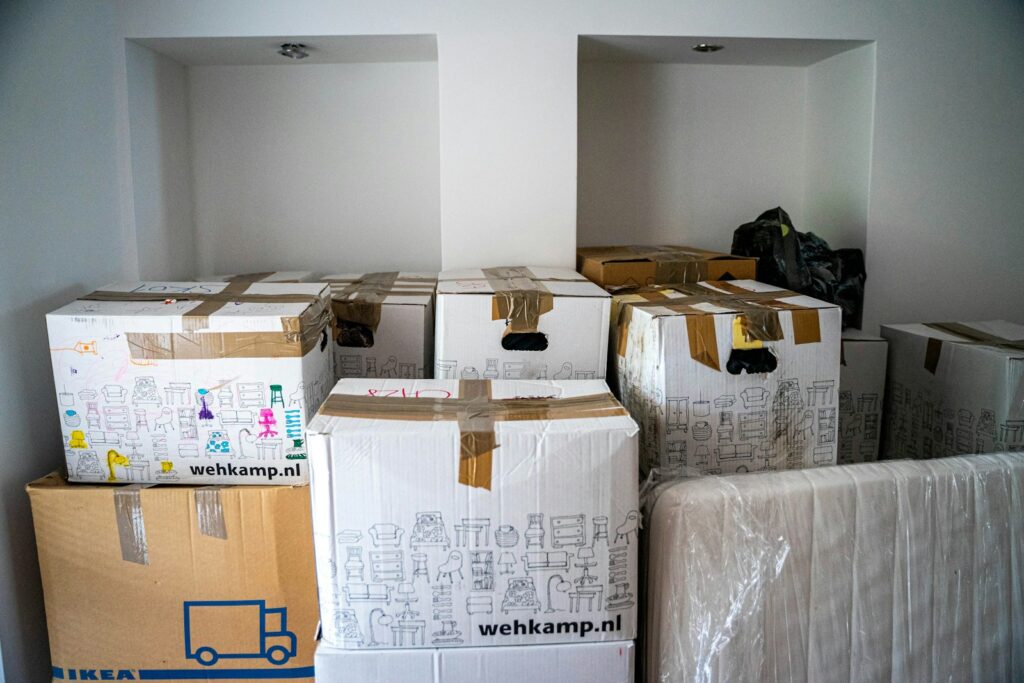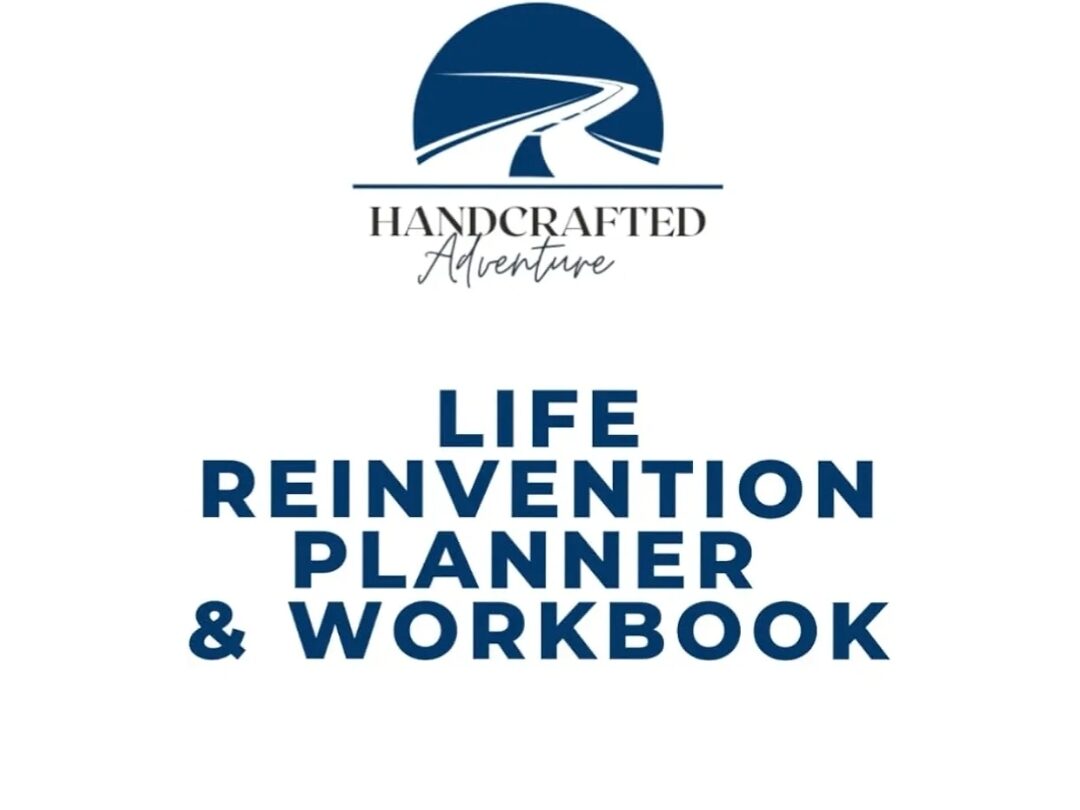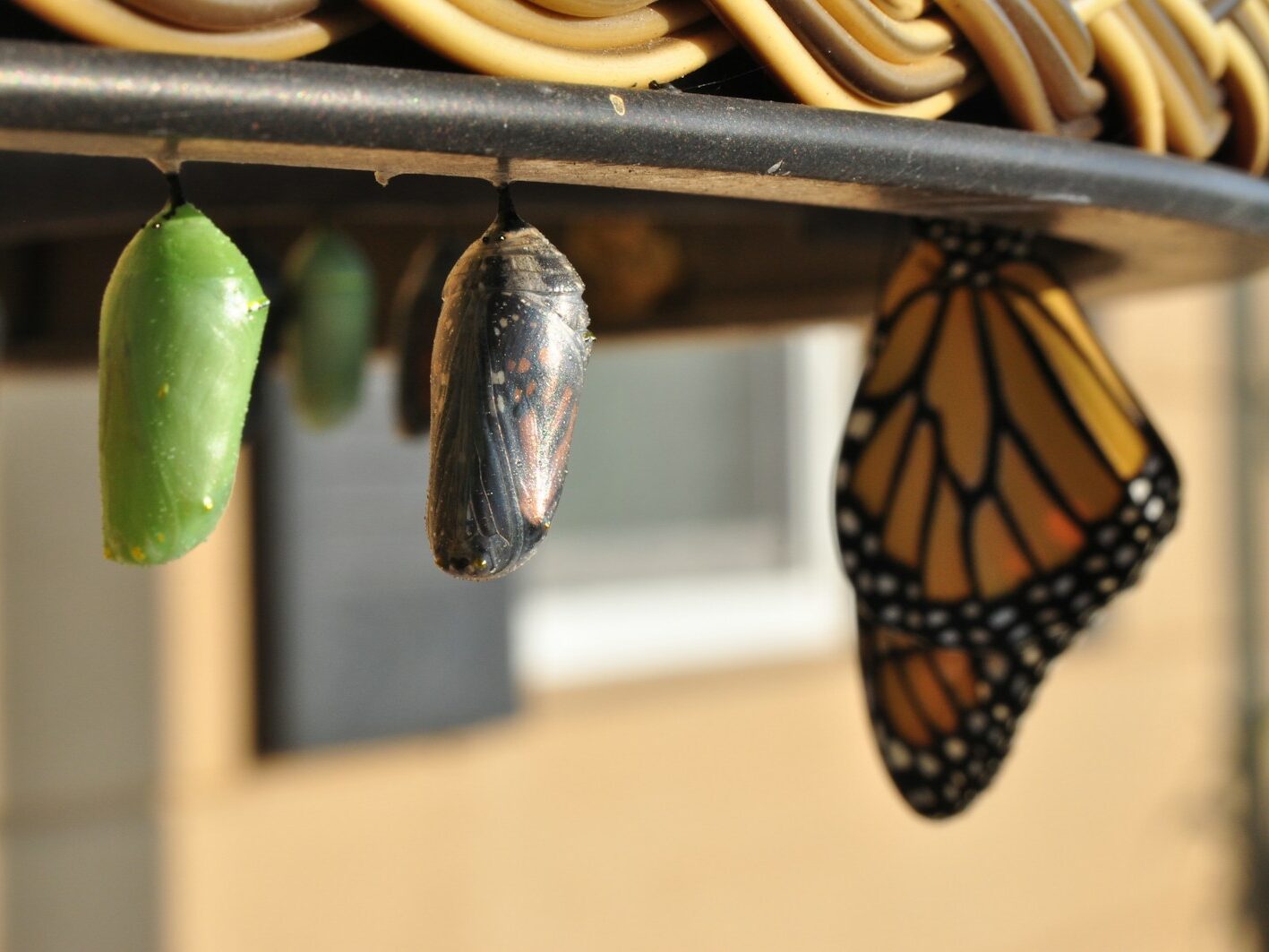Some life transitions are loud and dramatic—a sudden layoff, a health scare, a cross-country move. Others build slowly, quietly, until one day you realize: this life no longer fits.
That’s where we are right now—standing at a crossroads, trying to reinvent our life in a way that reflects who we are now.
After 12 years in our current home, my husband and I are downsizing. Not far—just a few miles away—but the emotional weight feels much heavier. We’re leaving behind more than just a house. We’re saying goodbye to a neighborhood we love and neighbors who’ve become true friends—the kind who know our dogs’ names, bring in our mail when we’re away, and stop for driveway chats that turn into heart-to-hearts.
Over time, these simple interactions became the fabric of our days. There’s comfort in the familiar. Letting go of that rhythm, that sense of place and belonging, has stirred up more emotion than I expected.
And yet—we’re choosing this. We feel the pull toward something different. Less house, more freedom. Fewer things, more space to breathe. And even though we made this decision consciously, it doesn’t make it easy.
This post contains affiliate links, which means I may earn a small commission if you make a purchase through one of them—at no extra cost to you. I only share products I personally use or believe could add value to your journey.

What People Don’t Always Say About Midlife Reinvention
Here’s the truth: to reinvent your life at a crossroads, you don’t need a dramatic story or big crash-and-burn moment. You just need the awareness that something is no longer aligned—and the courage to do something about it.
But here’s the part people skip:
Reinvention is rarely clean. It’s emotional. It’s uncomfortable. It brings up grief.
The grief of leaving behind a place you love. The grief of saying goodbye to a version of yourself that fit for a long time. The grief of not knowing what’s ahead—and doing it anyway.
It’s also exhausting and confusing. Sometimes it’s not about having a crystal-clear vision of the next chapter—it’s about having the discipline to keep moving, even when you don’t have all the answers. It’s about choosing a direction, sticking with it, and resisting the urge to overanalyze every possible path. And sometimes? Reinvention is less about figuring out exactly what you want—and more about getting honest about what you don’t want anymore. That clarity becomes your compass.

Limiting Beliefs Keep Us Stuck
When we’re on the edge of change, the loudest resistance usually isn’t coming from outside—it’s coming from our own head.
You know the voice:
“You’re too old to start over.”
“Everyone else figured this out already.”
“What if you mess it up and regret everything?”
“You don’t have the energy for this.”
“Now’s not the right time. Maybe later. Maybe never.”
These thoughts don’t usually show up with a warning label. They sneak in disguised as logic, responsibility, or caution. But what they really are… are limiting beliefs—the quiet scripts we absorb over time that convince us to play small, stay safe, and not rock the boat.
These are more than just negative thoughts—they’re deep-seated mental habits that quietly convince us we’re not capable or worthy of change. We pick them up over time through experiences, disappointments, and fear. Left unchecked, they become the lens we see everything through—making us second-guess ourselves, procrastinate, or stay stuck in situations we’ve outgrown.
But here’s the thing:
Just because you think something doesn’t mean it’s true.
One of the most powerful shifts I’ve made—and honestly, I still have to practice it daily—is stopping in the moment and asking, “Wait… is that actually true? Or is that fear talking?”
Because the truth is, most of these beliefs didn’t come from you in the first place. They came from your past, your family, your environment, or a season of life where playing it safe made sense. But you’re not in that place anymore. You’ve grown. You know more. You are more.
You don’t have to believe everything you think.

Why Even Good Change Feels So Hard
Here’s something I wish more people said out loud:
Even when you’re ready to reinvent your life, your brain isn’t.
You can feel inspired, committed, and excited—and still wake up with anxiety, brain fog, or that tight feeling in your chest like something’s off. And that’s not a sign that you’re on the wrong path. That’s your nervous system doing what it’s designed to do: protect you.
Our brains crave familiarity. Even if something isn’t working anymore, we tend to stay in it simply because it’s known. Change—especially the kind that brings unknowns—can stir up all sorts of discomfort, even when we know it’s the right step. That’s not a sign you’re making a mistake. That’s just how our minds respond to risk. It’s a survival instinct, not a red flag.
And let’s be honest: change is exhausting. It’s not just the logistics—it’s the mental weight of decision fatigue, emotional ups and downs, second-guessing yourself, and trying to keep the rest of life running at the same time.
So if you’ve felt tense, emotional, overwhelmed—or just completely worn out—you’re not doing it wrong. You’re not being dramatic.
You’re just human. And you’re doing something brave.

Reinventing Our Life at a Crossroads: Downsizing With A Purpose
For us, this shift didn’t happen overnight. It came after years of subtle nudges—quiet thoughts during morning walks, long conversations over coffee, and that growing feeling that the life we’d built, while beautiful, was starting to feel too big for the season we’re stepping into.
We knew we wanted to simplify.
We wanted more freedom, less noise.
More flexibility, less upkeep.
A life that made space for the things we keep saying matter most—travel, time outdoors, meaningful experiences, and a little breathing room.
Here’s what we’re moving toward:
- More nature, less noise
- More experiences, fewer things
- More time outside, less time managing stuff
- A slower pace, built with intention
On paper, it all sounds good—honestly, it is good. But let me tell you: even when your heart knows it’s the right move, it still stings.
Lately, I’ve caught myself walking the dogs slower. Memorizing the sidewalk cracks. Lingering a few extra minutes when a neighbor waves. Taking mental snapshots of front porches and flowerbeds I’ve passed a thousand times.
Because maybe this is the last season we’ll see them every day.
And that realization sits heavier than I expected.
There’s grief tucked into the process of letting go—even when you’re excited for what’s next. You’re not just leaving a house; you’re leaving a history. You’re saying goodbye to the version of yourself who built this life. And that’s emotional.
But that’s also the beauty of reinvention:
You get to honor where you’ve been and still choose where you’re going.
🔗 Related read: Redefining Success: What If It’s Not What You Thought?

What Helps When You’re Ready to Reinvent Your Life
Reinvention doesn’t happen in a single leap—it unfolds in layers.
It’s less about dramatic, sweeping change and more about quiet, consistent mindset shifts that nudge the door open to something new.
These are three reframes that have helped me move forward when I felt stuck, scared, or unsure where to begin:
1. From “I’m not ready” → “I’ll learn as I go.”
You don’t need a master plan to start. You don’t need the perfect timing, the perfect tools, or the perfect version of yourself. You just need a little willingness to begin.
Readiness isn’t a feeling—it’s a decision.
Research from psychologist Carol Dweck on the growth mindset shows that people who believe they can grow through effort and experience are more motivated, more resilient, and more likely to follow through even when it’s hard (Dweck, 2006).
So if you’re waiting to feel fearless? You might be waiting forever.
Start now. Figure it out along the way.
2. From “I can’t” → “What if I could?”
This might be my favorite reframe. Because it doesn’t ask you to commit—it just asks you to wonder.
What if I could make a change?
What if it worked out better than I imagined?
What if I’m more capable than I think?
That shift—from panic to possibility—is powerful. It loosens the grip of fear and makes space for creativity, curiosity, and maybe even hope.
📚 Affiliate rec: Soundtracks by Jon Acuff — This book is part humor, part therapy, and full of practical tools for replacing the noise in your head with something more true and helpful.
3. From “It’s too late” → “This is exactly my time.”
Let’s dismantle the idea that there’s a perfect timeline. There isn’t.
The life you’ve lived until now isn’t wasted—it’s the foundation you get to build on. You’re not starting over. You’re starting from experience. That’s a big difference.
In my own experience—and in countless conversations with others—midlife isn’t a crisis. It’s a crossroads. It’s often the first time we pause long enough to ask: What do I want now? And answering that question with honesty, even if it means rewriting the plan, can bring a deeper sense of clarity and contentment than ever before.
Tools to Support You When You’re in Transition
When your thoughts feel scattered and your energy is all over the place, a little structure can go a long way. Having a guide to reflect, reset, and refocus helped me move from overwhelm to clarity.
Life Reinvention Planner & Workbook
Think of this as a reset button. It walks you through your values, vision, and what you want to create in the next season—especially helpful when your path feels foggy.

Awaken Your Potential Workbook
If you’ve felt stuck or unsure of what you even want anymore, this workbook helps you reconnect with your strengths, creativity, and purpose.

🔗 Also helpful: How to Add Adventure into Your Daily Routine

Grieving While Growing
One of the hardest parts of reinvention is that it often starts with letting go of something good. A home that held memories. A version of yourself that got you this far. A life that made sense—until it didn’t.
And that loss can feel… blurry. Hard to name. Like you’re not sure if you’re sad, relieved, excited, or completely overwhelmed.
(Spoiler: You’re probably all of those things at once.)
There’s a name for it—ambiguous loss—the kind of grief we feel when something changes, but doesn’t fully disappear. And it’s very real.
You can love what you’re leaving and still move forward.
You can be grateful for what was and still make space for what’s next.
Take the walks. Wave to the neighbors. Let your heart feel it.
And know that grief doesn’t mean you’re going the wrong way—it means this mattered.

Final Thoughts: Start From Experience, Not Scratch
Here’s what I know after walking through this transition:
You are not stuck.
You are not too late.
You are not behind.
You are right on time.
Reinvention isn’t about becoming someone else—it’s about coming home to who you really are. And if you’re standing at your own fork in the road, unsure of what’s next—maybe this is your invitation to stop waiting and start becoming.
You’re not starting over.
You’re starting from everything you’ve lived, learned, and survived.
And that’s more than enough.
